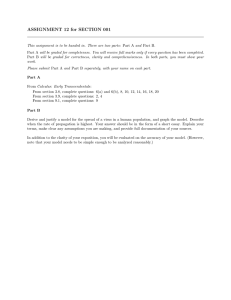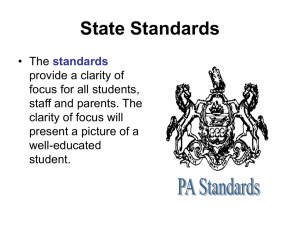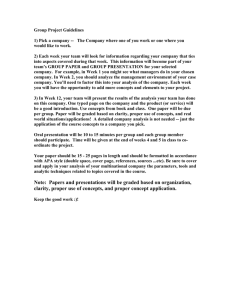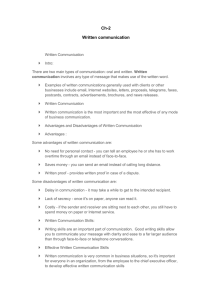Green Manufacturing Facilities Layout Planning: Procedures, Tools & Analysis
advertisement
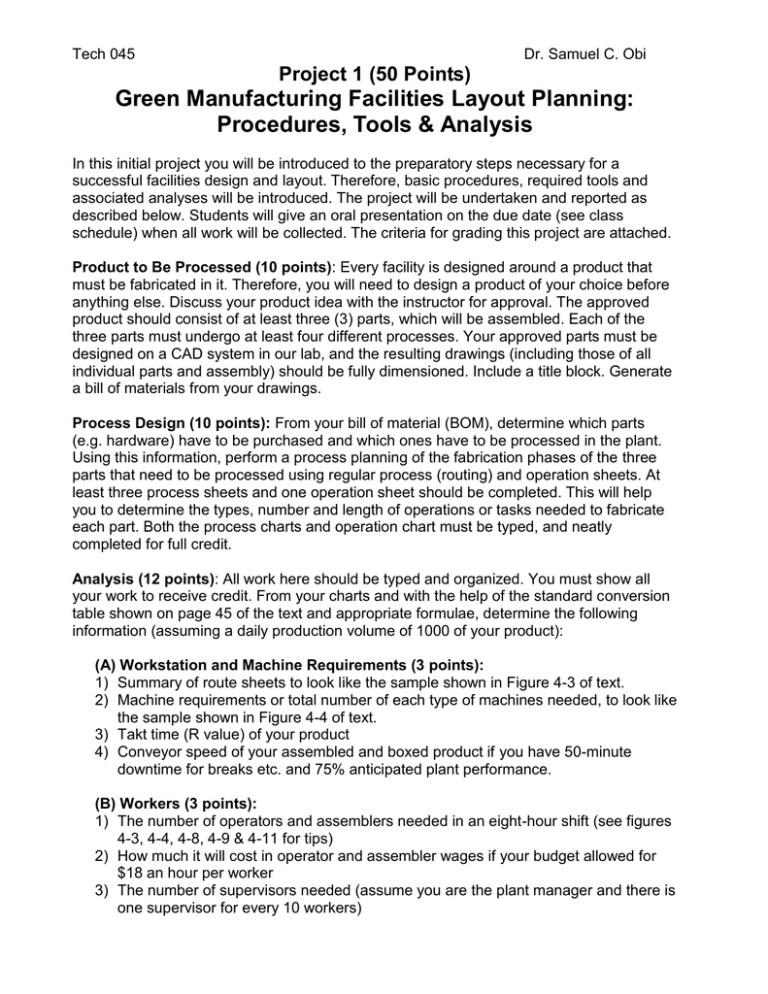
Tech 045 Dr. Samuel C. Obi Project 1 (50 Points) Green Manufacturing Facilities Layout Planning: Procedures, Tools & Analysis In this initial project you will be introduced to the preparatory steps necessary for a successful facilities design and layout. Therefore, basic procedures, required tools and associated analyses will be introduced. The project will be undertaken and reported as described below. Students will give an oral presentation on the due date (see class schedule) when all work will be collected. The criteria for grading this project are attached. Product to Be Processed (10 points): Every facility is designed around a product that must be fabricated in it. Therefore, you will need to design a product of your choice before anything else. Discuss your product idea with the instructor for approval. The approved product should consist of at least three (3) parts, which will be assembled. Each of the three parts must undergo at least four different processes. Your approved parts must be designed on a CAD system in our lab, and the resulting drawings (including those of all individual parts and assembly) should be fully dimensioned. Include a title block. Generate a bill of materials from your drawings. Process Design (10 points): From your bill of material (BOM), determine which parts (e.g. hardware) have to be purchased and which ones have to be processed in the plant. Using this information, perform a process planning of the fabrication phases of the three parts that need to be processed using regular process (routing) and operation sheets. At least three process sheets and one operation sheet should be completed. This will help you to determine the types, number and length of operations or tasks needed to fabricate each part. Both the process charts and operation chart must be typed, and neatly completed for full credit. Analysis (12 points): All work here should be typed and organized. You must show all your work to receive credit. From your charts and with the help of the standard conversion table shown on page 45 of the text and appropriate formulae, determine the following information (assuming a daily production volume of 1000 of your product): (A) Workstation and Machine Requirements (3 points): 1) Summary of route sheets to look like the sample shown in Figure 4-3 of text. 2) Machine requirements or total number of each type of machines needed, to look like the sample shown in Figure 4-4 of text. 3) Takt time (R value) of your product 4) Conveyor speed of your assembled and boxed product if you have 50-minute downtime for breaks etc. and 75% anticipated plant performance. (B) Workers (3 points): 1) The number of operators and assemblers needed in an eight-hour shift (see figures 4-3, 4-4, 4-8, 4-9 & 4-11 for tips) 2) How much it will cost in operator and assembler wages if your budget allowed for $18 an hour per worker 3) The number of supervisors needed (assume you are the plant manager and there is one supervisor for every 10 workers) (C) Space and Total Budget (3 points): 1) Total amount of space anticipated for the proposed plant (the sum of all calculated spaces for machines, offices, storage, restrooms, shipping & receiving, isles, tool room, cribs, cabinets, benches, assemblers, conference rooms, lunch rooms, stock room etc.). Show all your data and calculations in a space requirement worksheet or spreadsheet similar to the one shown in figure 13-1 of text. 2) Total cost of the proposed project for it to be fully constructed and implemented, assuming that the following costs would be incurred: a. Purchase and installation of machines and equipment = $450,000 b. Materials for constructing the facility = $570,000 c. Building contractor’s charge for each square footage = $1500 (D) Estimated Percentages or Green Factors to be Expected (3 points): 1) Relative to equipment, facilities, energy and materials 2) Relative to personnel and company’s business policy 3) Relative to processes, techniques etc. 4) Relative to the entire project Oral Presentation (8 points): You will be required to make a 5-10 minute oral presentation of your project. This presentation should also include sufficient explanation of your project design and analysis, using effective visual aid to explain. Plan your presentation as if you will be presenting it to your company’s review board on the potential benefits you envision, seeking their approval to support you in completing the proposed layout and budget. Assume that the board gave you some time-off to undertake this feasibility-analysis phase. Coming to class late on that day may result in lost points, so try and be in class at least five minutes before class begins. Report (10 points): A one- to one and a half-page, double-spaced typed report is required. The report should include a detailed description of the four areas listed below, each with its own sub-title: a) Introduction of the problem (i.e. general introduction and explanation of product) b) Descriptions of what it will take to fabricate it (machines, workers, space etc.) c) Evidence of green and sustainable technology in the proposal d) Potential benefits to the organization if proposal is implemented Attachments: The following materials must be attached to the report: 1. Dimensioned and titled CAD drawings (components and assembly) 2. Bill of materials indicating buy or make decisions 3. Completed process charts 4. Completed operation (assembly) chart 5. Answers to all analysis questions including all work (show all your work) Suggested Steps: 1. Identify product and get instructor’s approval 2. Design product and do associated documentation 3. Do process design (process and operation charts) 4. Perform all associated analyses 5. Write report 6. Attach all required materials and submit 7. Do oral presentation Grading Criteria for Project 1 (50 Points) Student: _______________________________________________ Criteria Points Possible Points Received 1. Written report (1-2 pages): Completeness, format, grammar, Spelling, clarity, preparation etc. 10 _______ 2. Product Design and BOM: Completeness, format, dimensioning, title, analysis, clarity, preparation, etc. 10 _______ 3. Process design materials (Process charts and Operation chart) Completeness, format, clarity, analysis, preparation, etc. 10 _______ 4. Analysis: (workstation, Workers, Space & Green) Completeness, correctness, clarity, analysis, preparation, etc. 12 _______ 5. Oral presentation: Time, completeness, content, visual aids, clarity, outline, audibility, appearance, etc. 8 _______ Total Points Received out of 50 ______ Comments: ________________________________________________________________________ ________________________________________________________________________ ________________________________________________________________________ ________________________________________________________________________
